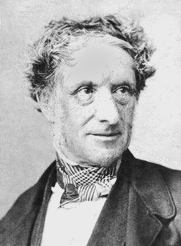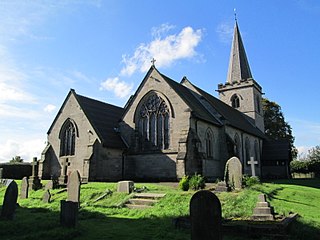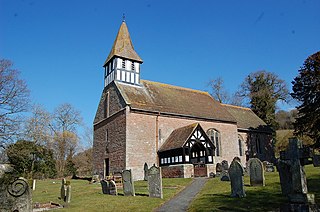
Hereford is a cathedral city and the county town of Herefordshire, England. It lies on the River Wye, approximately 16 miles (26 km) east of the border with Wales, 23 miles (37 km) north-west of Gloucester and 24 miles (39 km) south-west of Worcester. With a population of 53,112 in 2021, it is the largest settlement in Herefordshire.

Raymond Grieg Mason was a sculptor.

The West Midlands is one of nine official regions of England at the first level of International Territorial Level for statistical purposes. It covers the western half of the area traditionally known as the Midlands. The region consists of the counties of Herefordshire, Shropshire, Staffordshire, Warwickshire, West Midlands and Worcestershire. The region has seven cities; Birmingham, Coventry, Hereford, Lichfield, Stoke-on-Trent, Wolverhampton and Worcester.

Ross-on-Wye is a market town and civil parish in Herefordshire, England, near the border with Wales. It had a population estimated at 10,978 in 2021. It lies in south-east of the county, on the River Wye and on the northern edge of the Forest of Dean.

Herefordshire is a ceremonial county in the West Midlands of England. It is bordered by Gloucestershire to the south-east, Worcestershire to the east, Shropshire to the north and the Welsh counties of Monmouthshire and Powys to the west. The city of Hereford is the largest settlement and the county town.

Sir Richard Westmacott was a British sculptor.
Spring Vale is a ward of Wolverhampton City Council, West Midlands, England. It is situated SSE of the city centre, on the city's border with the Metropolitan Borough of Dudley. The population of the ward taken at the 2011 census was 12,243.

Rocester is a village and civil parish in the East Staffordshire district of Staffordshire, England. Its name is spelt Rowcestre in the Domesday Book. It is located on the Derbyshire border.

Arthur John Bridgeman ARCA, FRBS, FRBSA was an English sculptor.

Colin Grazier, GC was a sailor in the Royal Navy who was posthumously awarded the George Cross for the "outstanding bravery and steadfast devotion to duty in the face of danger" which he displayed on 30 October 1942 in action in the eastern Mediterranean when capturing codebooks vital for the breaking of the German naval "Shark" Enigma cipher from the sinking German submarine U-559.
Gordon Herickx (1900–1953) was an English sculptor.

Peter Hollins was a British sculptor operating throughout the 19th century.

Edward Grubb of Birmingham (1740–1816) was an English stonemason, sculptor and artist, the first unambiguously fine art sculptor to work in Birmingham.

Rose Garrard is an installation, video and performance artist, sculptor, and author. Garrard's works have been exhibited at the Victoria and Albert Museum, the Tate Gallery, the British Council maintained Great Britain pavilion at the 1984 Venice Biennale, and national galleries in Austria and Canada.
Angela Conner FRSS is an English sculptor who works in London. Conner has exhibited internationally and has large scale sculptures in public and private collections around the world.
George Thomas Noszlopy was a Hungarian-British art historian. Based in England from the 1950s, and the author of several books on the public sculpture of the English Midlands.
Ed Elliott is an English sculptor who achieved national recognition for his large wooden angel commissioned by the National Trust.

Castle Frome is a village and civil parish in the county of Herefordshire, England, and is 10 miles (16 km) north-east from the city and county town of Hereford. The closest large town is the market town of Bromyard, 5 miles (8 km) to the north. The Norman font in Castle Frome church is "one of the outstanding works of the Herefordshire school".

The Malt Shovel is a 2001 sculpture by Andrew Hazell that stands on the corner of High Street and New Street in Burton upon Trent in England. It was commissioned by East Staffordshire Borough Council in 1998 and funded by a National Lottery grant. The sculpture is a representation of a shovel used for malting, part of the brewery process that dominated the town's history. The stainless-steel sculpture stands 9 metres (30 ft) tall and has a bottle-shaped opening in the blade through which people can walk. The sculpture was unveiled amid local controversy over its accuracy and site.

















